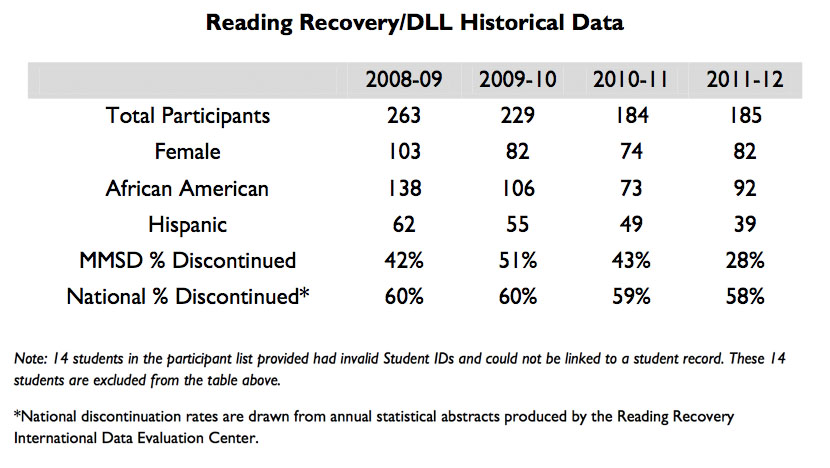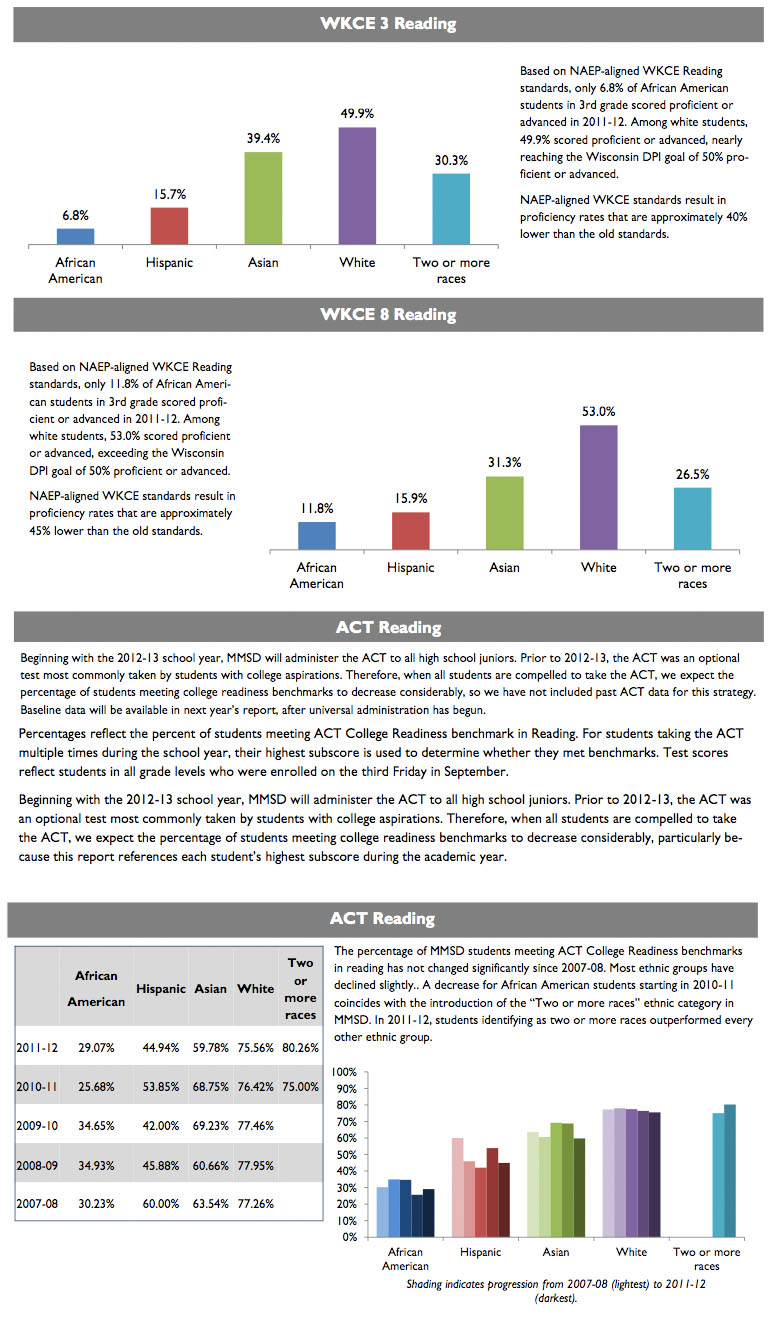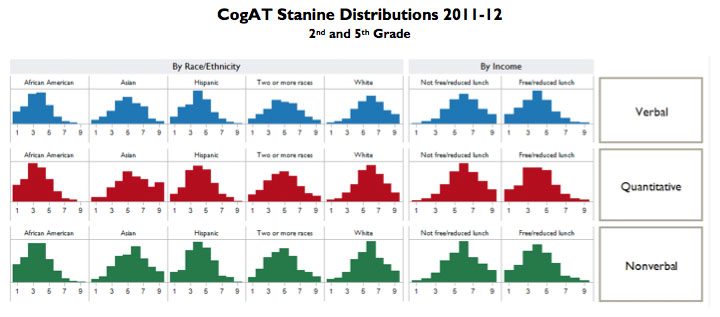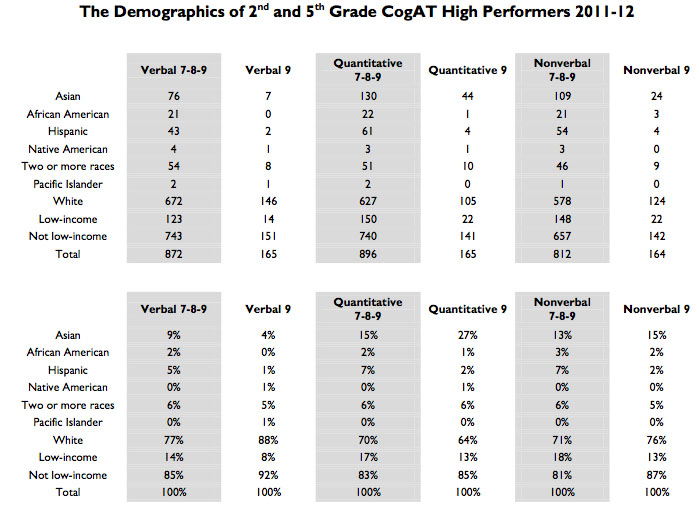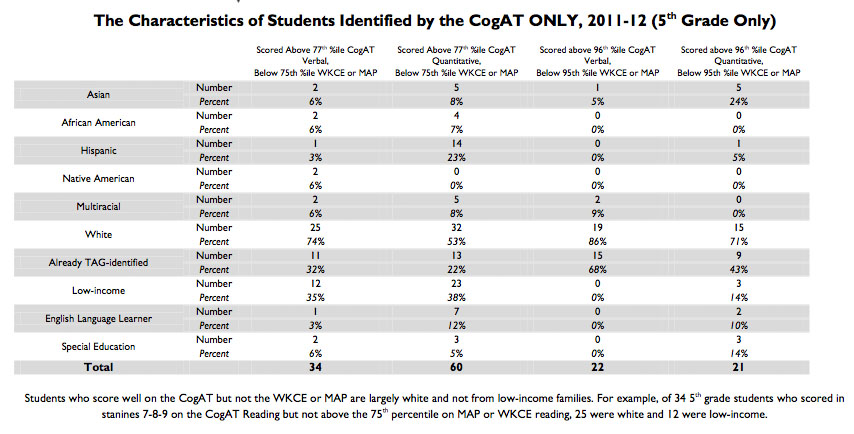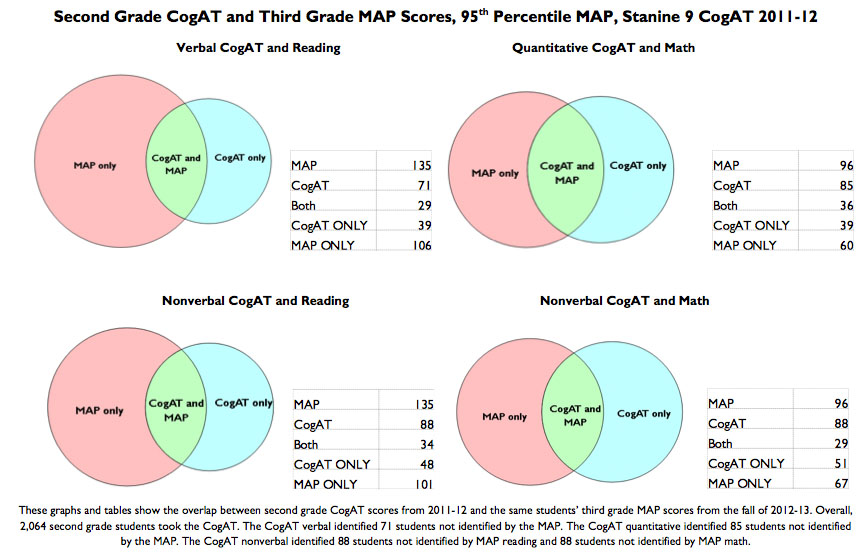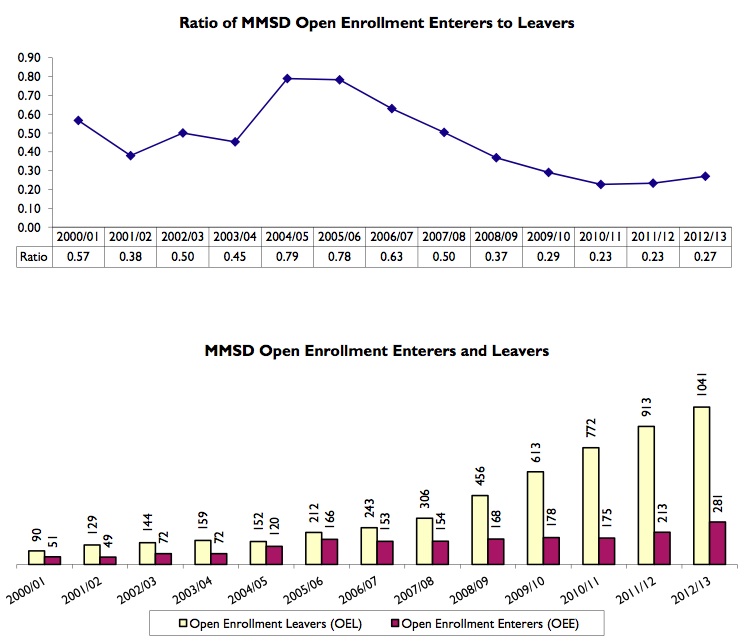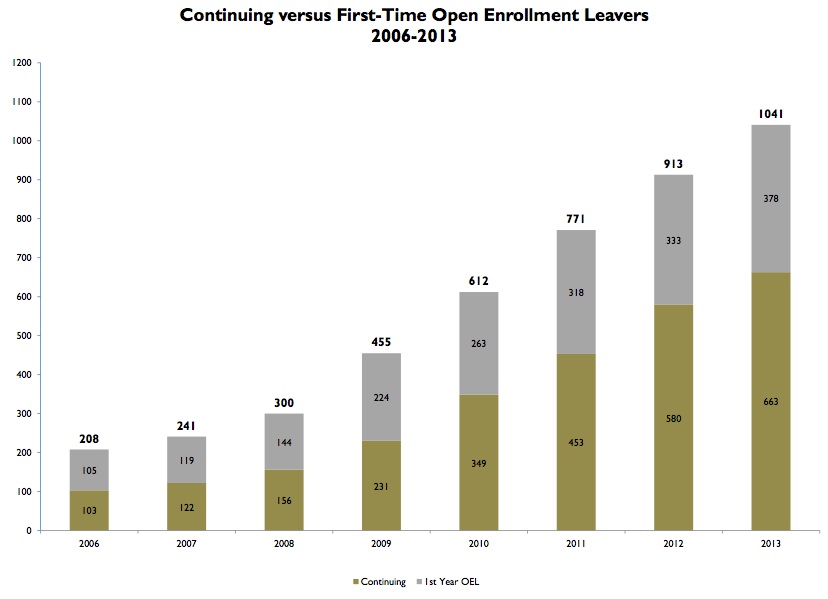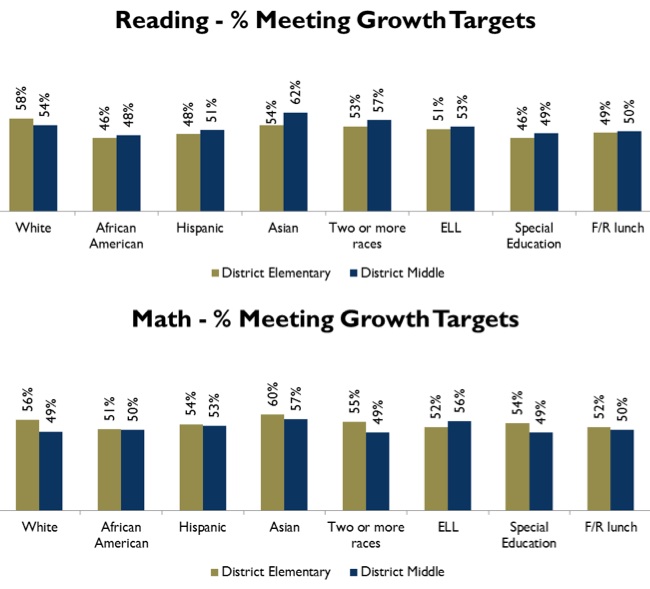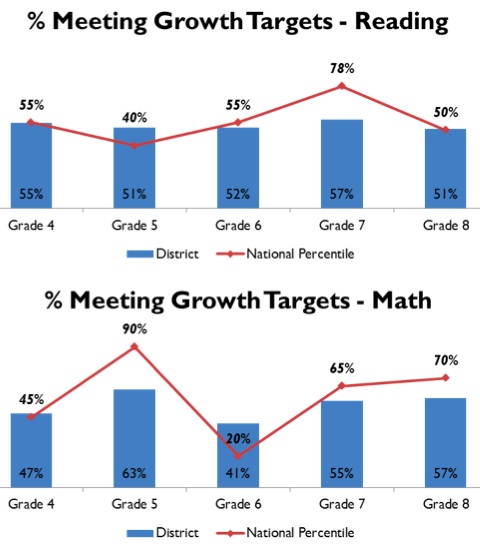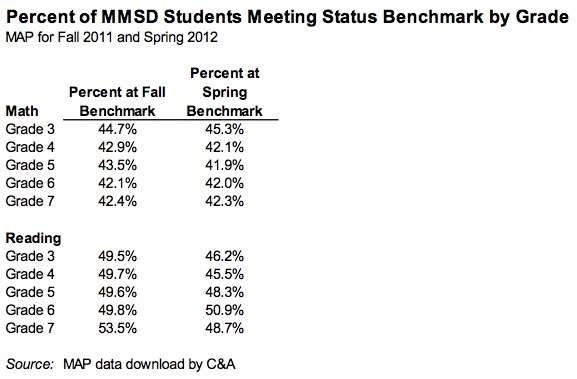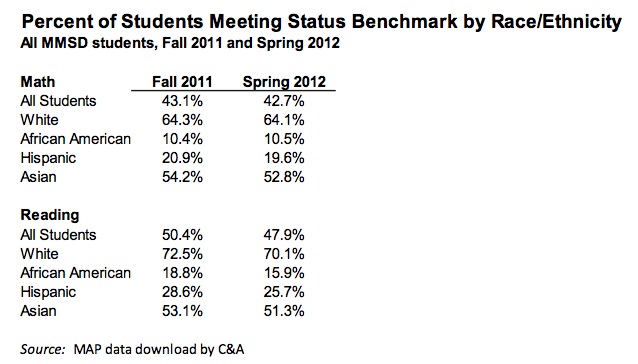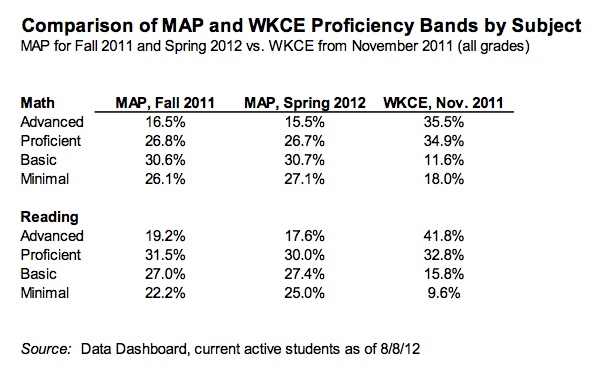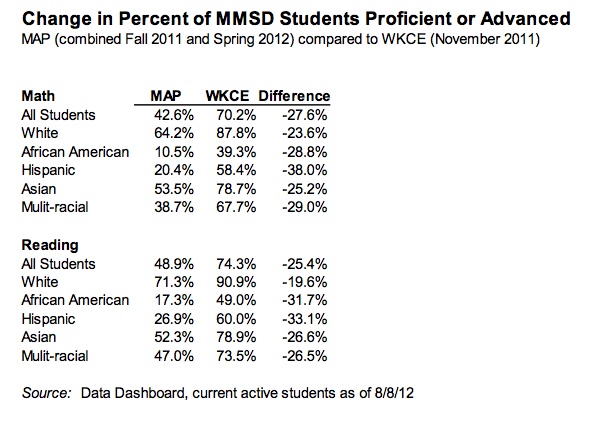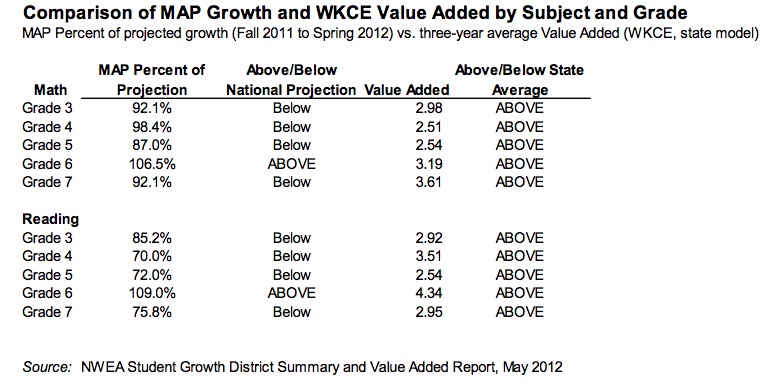Search Results for: Jane belmore
A chat with Jane Belmore
Scott Girard: Jane Belmore retired in 2005 after nearly three decades as a Madison teacher and principal. That wasn’t the end of her career with the Madison Metropolitan School District: She’s since been asked twice to lead when the district found itself between superintendents. Both turned out to be pivotal moments for the district. Cap […]
Madison School District taps Jane Belmore (again) to serve as interim superintendent
Negassi Tesfamichael: A familiar face will serve at the helm of the Madison Metropolitan School District for the upcoming school year. The Madison School Board on Friday named Jane Belmore, a retired MMSD teacher and administrator, to serve as the interim superintendent. Belmore will take over once current Superintendent Jen Cheatham steps down at the […]
Interview with MMSD Interim Superintendent Dr. Jane Belmore
Literacy is also important to Belmore who has a background and training as a reading specialist. “I’m a person who has quite a bit of expertise in curriculum and literacy so I’m really interested in the literacy goals that go throughout,” she says.
One of the things that Belmore is going to be pulling together is a Literacy Summit that she will facilitate. “The Summit is bringing together all of the pieces of the literacy initiative — middle schools, high schools,” Belmore says. “We’re going to work with the people who have been guiding that work just to communicate better so that high school teachers have a better understanding of what elementary school teachers are doing. I think it helps people understand that they are not alone and that it really takes all of us to do this.”
Belmore has been reaching out to the community — going to functions and talking to parents and meeting with agencies and non-profits. “There is a fair amount of that that goes along with this role and I actually enjoy that part of it,” she says. “I like to get out with people and talk about the work we’re doing and seeing what kind of questions they have. I’ve met with a lot of major community partners already — many whom I already had relationships with at Edgewood.”Notes and links on interim Madison Superintendent Jane Belmore, here.
An Alumnus, Madison’s Interim Superintendent: Jane Belmore
A few links on Madison’s interim Superintendent, Jane Belmore. Belmore was Madison’s Assistant Superintendent for Elementary Schools before moving to the School of Education at nearby Edgewood College.
And, of course, there are quite a few schoolinfosystem.org links, including this post on the District’s reading problems.
Reading, which is clearly the District’s job number one, continues to be a challenge, according to this 2009 Reading Recovery study: 60% to 42%: Madison School District’s Reading Recovery Effectiveness Lags “National Average”: Administration seeks to continue its use.
Finally, a bit of history on Madison Superintendent hires over the years.
Dan Simmons article mentioned the School District’s spokeswoman: Rachel Strauch-Nelson. Interestingly, Ms. Strauch-Nelson formerly worked for Madison’s previous Mayor, Dave Cieslewicz and prior to that for the Democratic Party of Wisconsin. Chief Information Officer Andrew Statz also worked for the previous Mayor.
Q&A with Madison schools’ Belmore: Interim post ‘kind of my style’
Q: What will the state’s new report cards and individual school ratings this fall mean for Madison schools?
A: We need to work together with our community members and organizations and make sure we understand what the information is going to mean to our different audiences. The conversation that took place in the school district and the community last year laid the foundation for that. People are absolutely focused on the fact that we have to do better with all of our children. It’s really a matter of making sure the strategies that we have are moving forward and are the right ones and we’re checking them along the way and making corrections, and hopefully every child will be better on every measureMuch more on Interim Madison Superintendent Jane Belmore, here.
Madison’s “Professional Development” Plans
Superintendent Jane Belmore (PDF):
The professional learning priorities for 2013-14 are improving practices on both academic and behavior sides of the Multi-tiered System of Support (MTSS) Triangle. More specifically, these priorities are in (a) literacy/English Language Arts and Common Core State Standards and (b) Positive Behavior Supports/Social Emotional Learning. An essential part of this professional learning involves their integration with a MTSS, the Danielson Framework for Teaching, and culturally & linguistically responsive practices. Math will also remain a focus at the secondary level and a summer focus for elementary. Our student data demonstrate the need to focus professional learning on Tier I “core” practices within a MTSS, where the needs of 80-90% of students should be met.
Reading Recovery in Madison….. 28% to 58%; Lags National Effectiveness Average….
Tap or click for a larger version of the above chart.
Madison Superintendent Jane Belmore:In investigating the options for data to report for these programs for 2011-12 and for prior years, Research & Program Evaluation staff have not been able to find a consistent way that students were identified as participants in these literacy interventions in prior years.
As such, there are serious data concerns that make the exact measures too difficult to secure at this time. Staff are working now with Curriculum & Assessment leads to find solutions. However, it is possible that this plan will need to be modified based on uncertain data availability prior to 2011-12.Much more on Madison’s disastrous reading results, here. Reading continues to be job one for our $392,000,000 public schools.
Tap or click to view a larger version of the above image.
Measuring Madison’s Progress – Final Report (2.5MB PDF).
Given the results, perhaps the continued $pending and related property tax increases for Reading Recovery are driven by adult employment, rather than kids learning to read.
UPDATE: April 1, 2013 Madison School Board discussion of the District’s reading results. I found the curriculum creation conversation toward the end of the meeting fascinating, particularly in light of these long term terrible results. I am not optimistic that student reading skills will improve given the present structure and practices. 30 MB MP3.
Madison’s “Building Our Future” Final Report & Activity Summary. Reading Appears to be Job 1….
Superintendent Jane Belmore 2.5MB PDF
When the Building Our Future plan was approved in June 2012, BOE members approved two motions to assure that specific accountability plans and progress indicators would be provided for each program receiving funding. Research & Program Evaluation staff have worked since then to create a comprehensive report to monitor progress on district priorities and strategies related to the plan. It is noted that while this plan officially indicated 17 specific strategies to address closing achievement gaps, every instructional decision in the district and at the school level is made with the intention of all students learning to potential and all learning gaps closed.
The overarching priorities section of the report has been developed this year to provide the direction for and measure of all of the energies that are going into all students reaching high levels of academic performance. This section of the report can stand alone as direction for and measures of overall district improvement efforts.Summary of “Building Our Future” activites (2.3MB PDF)
A. Synthesis of Topic: The Building Our Future Plan is a comprehensive set of strategies designed to eliminate achievement gaps while at the same time increase the achievement of all students. Attached to this report are Summary of Activities for the strategies approved by the Board of Education in each of the identified foundational areas: Instructional support, College and Career Readiness, Culturally Relevant Practices, Safe and Positive School Environments, Family Engagement, and Diverse and Qualified Workforce. Each of the summaries provides activities implemented, challenges, and future recommendations. All strategies now have outcome measures identified.
B. Recommendations: We are recommending, for budget purposes, all year two activities be moved to year three and that next year will be a combination of completion of year one activities and some recommended year two activities. These specific recommendations will come through the 2013/14 budget process. As with any implementation phase, some of the strategies needed to be modified and adapted. We continue to see this plan as the frame work by which the district will close the achievement gap.Related: Madison’s disastrous reading results.
Up, Down & Transparency: Madison Schools Received $11.8M more in State Tax Dollars last year, Local District Forecasts a Possible Reduction of $8.7M this Year
The Madison School District stands to lose millions of dollars in state aid under Gov. Scott Walker’s budget proposal, district officials said Wednesday.
The district is projecting an $8.7 million, 15 percent reduction in state aid, Superintendent Jane Belmore said in an interview.
She cautioned that the amount is a preliminary estimate based on the governor’s 2013-15 budget proposal, which could undergo changes by the Legislature.
The district is preparing its 2013-14 budget, and it’s unclear when a proposal will be finalized. School districts typically develop spending plans for the following year before knowing exactly how much money they’ll get in state aid.
Walker’s budget calls for a 1 percent increase in state aid, but Belmore said when district staff put the amount through the state’s complicated funding formula it resulted in the reduction. State Department of Public Instruction officials couldn’t verify the district’s estimate.
This year’s $394 million school budget included $249.3 million in property taxes, a 1.75 percent increase over the previous year.One would hope that any budget article should include changes over time, which DeFour unfortunately neglects. Madison received an increase of $11.8M in redistributed state tax dollars last year.
In addition, DeFour mentions that the current budget is 394,000,000. The most recent number I have seen is $385,886,990. where has the additional $8,113,010 come from? where is it being spent? was there a public discussion? Per student spending is now $14,541.42.
Related: Ed Hughes on School District numbers in 2005: in 2005::This points up one of the frustrating aspects of trying to follow school issues in Madison: the recurring feeling that a quoted speaker – and it can be someone from the administration, or MTI, or the occasional school board member – believes that the audience for an assertion is composed entirely of idiots.
Create Cultural Practices that are Relevant (CPR) Model Schools
Jane Belmore, Interim Superintendent (PDF):
Background Information: The Model School concept, to develop culturally relevant teaching practices, was approved as part of the Achievement Gap Plan.
The recommendation for a Cultural Practices that are Relevant (CPR) Model School addresses three primary needs:
- The need for the creation of better programs and services to increase achievement for underserved students. The need to create better support for teachers around implementing Response to Intervention (RtI) with cultural relevance at the core, according to the state and national RtI models, and
- The need for a school-based professional development environment on culturally and linguistically responsive practices, with an emphasis on promoting rigor in the content areas–beginning with literacy.
Additionally, the CPR model school’s combination of culturally responsive instruction, high expectations for achievement, early and extended learning, character development, and strong community partnerships will serve as an incubator for instructional improvement efforts in the district.
MMSD partnership with Boys & Girls Club shows continued gains in closing achievement gap
Students in the Madison Metropolitan School District’s Advancement Via Individual Determination (AVID) and the Boys & Girls Club’s Teens of Promise (TOPS) programs (www.avidtops.org) are achieving higher GPAs, enrolling in more advanced placement courses, and scoring higher on tests, according to a new analysis of the programs provided by the Wisconsin Center for the Advancement of Postsecondary Education (WISCAPE).
“We are so pleased that our ongoing partnership with the Boys & Girls Club is having a consistently positive impact on our students,” Superintendent Jane Belmore said. “It is because of this success that we have expanded AVID to middle schools this year. I want to thank the Boys & Girls Club for their work to make this partnership so effective.”
“PSA”: Your Student’s Test Scores May be Lower than in Years Past
If you’ve got a kid in third through eighth grade–or tenth–they took the WKCE exam this fall. “The Wisconsin content and knowledge exam and it’s been the statewide test for Wisconsin for quite a few years now,” said Dr. Jane Belmore, the superintendent of Madison schools.
Your student could score at one of these assessment levels: minimal, basic, proficient or advanced.”This year our WKCE test has been alligned with a nationally-normed test,” said Dr. Belmore.
Your student’s scores should be showing up soon and it’s possible he or she won’t be scoing as highly as in the past. “The results of this reallignment is that we’re holding ourselves and our students to a higher bar,” she said. “So students may be performing at the same level or even better than they were and yet still not get the kind of report that parents might be expecting.”
Dr. Belmore said it doesn’t necessarily mean your child is doing less well, everyone’s just being held to a higher standard. “If our students are being proficient and we’re expecting to see proficient we might see basic,” she said.Much more on the oft-criticized WKCE, here.
Madison School District Talented & Gifted Report: An interesting change from a few years ago; 41 students out of 1877 were newly identified for TAG talent development by the CogA T nonverbal.
Superintendent Jane Belmore (652K PDF):
This information is provided in response to a request for more information made at the January 28th Regular Board of Education meeting regarding the implication of CogAT for the 2012-13 school year. Communication with DPI TAG consultant has occurred on numerous occasions. A Review Committee, with additional members, met twice since January 28 and a survey of options was developed and distributed to the Assessment Review Committee and elementary and middle school principals. Results from this survey, in addition to previous Review Committee information, were used to develop the recommendation.
The BOE requested a report on CogAT which is attached to this memo.A few charts from the report:
Much more on the 2010 parent complaint on Madison’s “Talented & Gifted” program, here. The move to more one size fits all classes, such as English 10 a few years ago, reduced curricular options for all students. East High School “Redesign” halted.
Participation slump may force end of dual-language program at Madison’s Chavez Elementary
The Madison School District may discontinue its dual-language immersion program at Chavez Elementary because of a lack of Spanish-speaking families interested in the program.
Superintendent Jane Belmore said Thursday the district is reviewing several options and no decisions have been made. Other district schools that offer dual-language classes, which provide instruction to native and non-native English speakers in a mix of Spanish and English, are not affected, she said.
“It’s a problem that we haven’t had in other attendance areas because we’ve always had enough Spanish speakers,” Belmore said. “To really have a thriving program, you need half and half.”
School Board president James Howard said the board already plans to review the program in coming months because of a shortage of Spanish-speaking teachers.
“We just need to step back and have a conversation about where the program is and where it’s headed,” Howard said. “Do we need to slow down a bit?”
The district’s program started at the Nuestro Mundo charter school in 2004. It has since expanded to Chavez, Glendale, Leopold, Midvale and Sandburg elementaries and Sennett Middle School, with plans to expand it to Lincoln Elementary and Cherokee, Sherman and Toki middle schools.
Madison Superintendent’s Mental Health Task Force: Preliminary Recommendations
Madison Superintendent Jane Belmore (300K PDF):
Mental Health touches all of us. We pay tremendous immediate and long-term costs when students’ mental health needs are not met. It was with this awareness that the Board of Education directed former Superintendent Nerad in Spring 2011 to form a Task Force charged with developing a set of recommendations for a comprehensive, integrated and culturally-informed school-linked system of mental health practices and supports for MMSD students. A group of 35-40 representatives from a wide variety of community stakeholders including MMSD, HMOs, non-profit mental health agencies, law enforcement, city and county government, advocacy agencies and parents was invited to engage in this important work.
The work of the Task Force was initially facilitated by Superintendent Nerad and Scott Strong, Executive Director of Community Partnerships. Steve Hartley served in the co-facilitator role with Scott Strong upon Dr. Nerad’s departure. Staff in the Department of Student Services served as ‘staff’ to the committee and provided the structures and processes to keep the group moving forward toward its goals. The Task Force met on a monthly basis from January 2012 through January 2013, working both in a large group as well as in subgroups in the focused areas of Organization and Policy, Education and Outreach, Direct Services and Access and Individualized Care. The preliminary recommendations and consensus regarding priorities were completed in January 2013 and are contained in the attached document entitled: “School Community Plan to Support Children’s Mental Health”.
Update on the Building the Madison School District’s Future: Measuring Progress on Priorities report
Jane Belmore (PDF):
Superintendent Jane Belmore (4MB PDF):The Building Our Future plan provides direction for improving student achievement and district accountability. The plan identifies specific strategies and corresponding measures to meet the four overarching priorities of the district. The measures provide data to monitor progress towards improvement.
The key reason to include district and program measures in this report is to make sure that the Building Our Future plan is contributing to closing achievement gaps. Each program and initiative in Building Our Future is based on extensive research and planning. However, it is important to connect these initiatives to tangible outcomes. Tracking these measures helps increase accountability, allocate resources effectively and efficiently, and continuously improve our efforts to educate all students.
District Priorities: MMSD Management Team identified overarching district priorities in the areas of Attendance, Behavior, Growth and Achievement. The rationale for these priorities is based on the following theory of action:
When our teachers apply strong, explicit teaching skills within an aligned multi-tiered system of instruction and support, and students attend school regularly with behavior that positively impacts their learning and the learning environment, then students will show academic achievement, and social and emotional growth and gaps in learning and achievement will close.
This report outlines 2011-12 progress indicators for each of these priorities and includes historical data when appropriate.
Strategies: Each initiative in Building Our Future is outlined in the report, including a narrative description, the alignment to district priorities, the primary contact(s), action steps, and objectives with annual progress measures. When available, data from 2011- 12 on key progress indicators is included, along with relevant history for comparison. The approved 2012-13 budget for each strategy will also be integrated into the report to help contextualize how MMSD will allocate resources for this initiative moving forward.
Goal setting: This update includes a discussion on the methods used to set goals associated with each strategy. These are described in Attachment 3 and use literacy goals for Chapter 1, Strategy #1 as an example.
Madison School Board Policy 4221 Update: Use of Restraint and Seclusion
Madison Teachers, Inc. via a kind Jeannie Bettner email (PDF):
In response to the demands of MTI members seeking further clarification regarding the District’s enforcement of Board Policy 4221 – Use of Restraint and Seclusion – Interim Superintendent Jane Belmore provided a memo defining restraint and providing guidance about appropriate instances of incidental or brief physical contact with students while carrying out one’s duties. The Superintendent also clarified that, “Physical restraint is NOT briefly touching or holding a pupil’s hand, arm, shoulder or back to calm, comfort or redirect the pupil.”
While MTI continues to encourage staff to be cautious when redirecting students using any physical prompts, Belmore’s clarification is welcome. The District is in the process of providing training to staff relative to the appropriate use of physical restraint and seclusion, within the meaning of applicable Wisconsin Statutes.
Achievement gap exists for both longtime, new Madison students
The data showed the same result overall, but found new students are disproportionately low-income or minorities. Comparing students in similar racial and income groups, the district found time spent in the district did not explain the difference in test results.
The new district analysis challenges Mayor Paul Soglin’s focus in recent months on students moving to Madison from larger cities such as Milwaukee and Chicago. Soglin has called for alternative programs specifically geared toward new students to help improve low-income and minority student achievement.
“The practical fact is that mobility and newness are things we take into consideration, but when we plan how we’re going to address learning needs, they’re not the most important factors,” Superintendent Jane Belmore said.I’m glad Mr. DeFour continues to look into this important issue.
Related links:
“When controlling for demographic characteristics, the effects of additional years in MMSD on WKCE scores are largely ambiguous”. An Update on Madison’s Transfer Students & The Achievement Gap.
Madison Mayor Paul Soglin: “We are not interested in the development of new charter schools”.
Soglin right not to soft-pedal problems
I agree with Mayor Paul Soglin. Tackling our “urban problems” is preferable to soft-pedaling them and relying instead on improved public relations.
Given the wide achievement gap and the portion of black and Latino kids in our schools, it’s hard to believe Superintendent Jane Belmore’s claim that most of our school kids are doing very well. If, as Soglin believes, much of the gap is related to the many kids who transfer from other districts and are behind grade level upon entry, maybe the district should place them in grades appropriate for their achievement levels rather than basing placement solely on age. Similar reasoning might lead to abandoning present widespread use of social promotion, and promoting only those kids who have achieved grade level skills by the end of the year.
2013 Madison Schools Wishlist
Madison schoolboard member Ed Hughes:
11. I wish for a successful introduction of the Mondo reading program in all our elementary schools. Superintendent Jane Belmore has particular interest and expertise in literacy and she has spearheaded the school district’s decision to adopt the Mondo Bookshop Program at the K-5 level across all elementary schools, with the purchase of new curriculum materials funded through some of the unexpected state aid that came our way this fall. The Mondo program, which is said to have clearly-focused lesson guides that are aligned to the Common Core state standards, should be a significant step forward in terms of a district-wide, aligned, early literacy scope and sequence. I also wish that now that we have made a commitment to the Mondo program, we stick with it and don’t lurch towards some other approach if the improved outcomes we’re seeking take a while to arrive.
12. I realize there is initiative fatigue among our teachers and staff, but I wish for a continued push for new student-based ideas and initiatives developed at the school level, like the drive toward converting Toki Middle School to an Expeditionary Learning school. This fall, there was discussion of Toki possibly switching to a charter school structure as a way of accessing state funds that could help accelerate the conversion. I am sorry that this charter proposal has run into complications and has been withdrawn before the Board really had a chance to consider it, but I hope that principals, teachers and staff at all our schools continue to search for innovative approaches toward enhancing the engagement and learning of our students.
Madison School District’s Elementary Literacy Program
Madison Superintendent Jane Belmore (2.5MB PDF):
For the past four years, MMSD has been aware that the current implementation of balanced literacy, our core instructional program for literacy at the elementary level, has not resulted in all students making the progress necessary to meet grade level standards. The research shows that three key things are necessary for students to gain proficiency in the common core standards:
- a highly qualified teacher in the classroom
- a strong instructional leader in the school and
- access to an aligned, guaranteed and viable curriculum (Marzano, 2003).
It is clear that MMSD has two out of these three in place: highly qualified teachers and strong instructional leaders. To maintain and develop strong teachers and leaders need well planned, embedded, ongoing professional development. The
School Support Team and Instructional Research Teachers provide us the mechanism for delivering this necessary professional development.
What is needed is a decision about a guaranteed, viable core instructional curriculum that is cohesive across all 32 elementary schools. All student will benefit from consistency across grades levels and schools. Our students from mobile families must have the security and consistency that this core will provide.60% to 42%: Madison School District’s Reading Recovery Effectiveness Lags “National Average”: Administration seeks to continue its use.
When all third graders read at grade level or beyond by the end of the year, the achievement gap will be closed…and not before.
Madison School District Open Enrollment Leavers Report, 2012-13
Superintendent Jane Belmore (700K PDF):For the 2012-13 school year, MMSD has 1041 leavers and 281 enterers for a net enrollment decrease of 760 students due to open enrollment.
Of the 1041 leavers for 2012-13, 663 were “continuing leavers” who open enrolled outside of the District in previous years. The other 378 leavers left MMSD for the first time this year.
The increasing number of total leavers in recent years results from many consecutive years of increases in first-time leavers who subsequently become continuing leavers.
First time leavers increased from 333 to 378 from 2011-12 to 2012-13.
About 40% of the MMSD residents who open enroll outside of the district for the first time never attended MMSD and could be considered “stayers” for other districts.
A 2009 survey of open enrollment leavers showed that personal preference led to about one third of the decisions to leave, including concerns about safety, drugs and negative peer pressure. Proximity to other districts’ schools accounts for about a quarter of the reasons for attending another district. About a quarter were related to curricular, after school or virtual programs.Related: Much more on “open enrollment”, here, and the Madison School District’s enrollment forecast (PDF).
An Update on Madison’s Use of the MAP (Measures of Academic Progress) Assessment
Madison Superintendent Jane BelmoreUnlike other assessments, MAP measures both student performance and growth through administering the test in both fall and spring. No matter where a student starts, MAP allows us to measure how effective that student’s school environment was in moving that student forward academically.
This fall’s administration serves as a baseline for that fall to spring growth measure. It also serves as an indicator for teachers. As we continue professional development around MAP, we will work to equip schools to use this data at the classroom and individual student level. In other words, at its fullest use, a teacher could look at MAP data and make adjustments for the classroom or individual students based on where that year’s class is in the fall, according to these results.
Meeting growth targets on the fall administration indicates that a student met or exceeded typical growth from Fall 2011 to Fall 2012. Typical growth is based on a student’s grade and prior score; students whose scores are lower relative to their grade level are expected to grow more than students whose scores are higher relative to their grade level.
In Reading, more than 50% of students in every grade met their growth targets from Fall 2011 to Fall 2012. In Mathematics, between 41% and 63% of students at each grade level met their growth targets. The highest growth in Mathematics occurred from fourth to fifth grade (63%) and the lowest growth occurred from fifth to sixth grade (41%).
It is important to note that across student groups, the percent of students making expected growth is relatively consistent. Each student’s growth target is based on his or her performance on previous administrations of MAP. The fact that percent of students making expected growth is consistent across student subgroups indicates that if that trend continues, gaps would close over time. In some cases, a higher percentage of minority students reached their growth targets relative to white students. For example, at the middle school level, 49% of white students met growth targets, but 50% of African American students and 53% of Hispanic students met their growth targets. In addition, English Language Learners, special education students, and students receiving free and reduced lunch grew at similar rates to their peers.
MAP also provides status benchmarks that reflect the new, more rigorous NAEP standards. Meeting status benchmarks indicates that a student would be expected to score “Proficient” or “Advanced” on the next administration of the Wisconsin Knowledge and Concepts Examination (WKCE).
That means that even though overall scores haven’t changed dramatically from last year, the percent of students identified as proficient or advanced will look different with these benchmarks. That is not unique for MMSD – schools around the state and nation are seeing this as they also work toward the common core.
While these scores are different than what we have been used to, it is important to remember that higher standards are a good thing for our students, our districts and our community. It means holding ourselves to the standards of an increasingly challenging, fast-paced world and economy. States all around the country, including Wisconsin, are adopting these standards and aligning their work to them.
As we align our work to the common core standards, student achievement will be measured using new, national standards. These are very high standards that will truly prepare our students to be competitive in a fast-paced global economy.
At each grade level, between 32% and 37% of students met status benchmarks in Reading and between 36% and 44% met status benchmarks in Mathematics. Scores were highest for white students, followed by Asian students, students identified as two or more races, Hispanic students, and African-American students. These patterns are consistent across grades and subjects.
Attachment #1 shows the percentage of students meeting status benchmarks and growth targets by grade, subgroup, and grade and subgroup. School- and student-level reports are produced by NWEA and used for internal planning purposes.Related: 2011-2012 Madison School District MAP Reports (PDF Documents):
- District Summary
- District Growth Summary
- Growth by Ethnicity
- Allis Elementary
- Black hawk Middle School
- Chavez Elementary School
- Cherokee Middle School
- Crestwood Elementary School
- Elvehjem Elementary School
- Emerson Elementary School
- Falk Elementary School
- Glendale Elementary School
- Gompers Elementary School
- Hamilton Middle School
- Hawthorne Elementary School
- Huegel Elementary School
- Jefferson Middle School
- Kennedy Elementary School
- Lake View Elementary School
- Leopold Elementary School
- Mendota Elementary School
- Nuestro Mundo Elementary School
- O’Keeffe Middle School
- Olson Elementary School
- Orchard Ridge Elementary School
- Randall Elementary School
- Sandburg Elementary School
- Schenck Elementary School
- Sennett Middle School
- Sherman Middle School
- Shorewood Elementary School
- Spring Harbor Middle School
- Stephens Elementary School
- Thoreau Elementary School
- Toki Elementary School
- Van Hise Elementary School
- White Horse Middle School
- Wright Middle School
I requested MAP results from suburban Madison Districts and have received Waunakee’s Student Assessment Results (4MB PDF) thus far.
61 Page Madison Schools Achievement Gap Plan -Accountability Plans and Progress Indicators
Madison Superintendent Jane Belmore (2.5mb PDF)
Background on Goals: During the Student Achievement Committee meeting of October 1, several Board members discussed the issue of setting reasonable goals and the time needed to accomplish them. Most of the goals presented today are based on a five-year convergence model. Under this approach, achievement gaps are closed for every student subgroup in five years.
Forr example the baseline four-year graduation rate among white students is 85%. It is 61% among Hispanic students, and 54% among African American students.. With a five-year convergence model, the goal is for all student subgroups to reach a 90% on-time graduation rate. It is a statement that all student subgroups should improve and all gaps should close.
The reason for this approach is twofold. First, as adopted by the Board, the Achievement Gap Plan is a five-year plan. It is important that the student achievement goals reflect the timeline in the plan itself. The timeline for goals could be pushed out to ten years or more, but it would require formal directive from the Board to adopt ten years as the district’s new timeline for the Achievement Gap Plan.
Second, other models can be seen as conveying different expectations for students based on race/ethnicity or other characteristics like poverty, and that is not our intent. Taking ten years or longer to achieve stated goals may be viewed as a more reasonable time frame, but a five-year plan comes with a natural snapshot half way through that will illustrate persistent gaps and potentially convey varying expectations. Again, that is not our intent or our goal.
A note on Chapter 1, Literacy: The Accountability Plans for literacy are an example of two important concepts:
1. The district wide, instructional core in literacy must be strengthened in every school and every grade. Chapter 1, #1 speaks to a part of strengthening that core.
2. Once the core is strong fewer interventions are needed. However, some students will continue to need additional support. Chapter 1, #2 speaks to one example of an intervention that will help to prevent summer reading loss and close gaps.
The Board approval of $1.9 million for the purchase of elementary literacy materials provides a powerful framework for bringing cohesion to the elementary literacy program. The purchase will provide a well-coordinated core literacy program that is aligned with the common core standards and meets the needs of all learners.
The first steps will bring together an Elementary Literacy Leadership team to clarify the purpose and framework for our program. The overall framework for our entire elementary literacy program is Balanced Literacy. Building upon the current MMSD core practices in 4K-12 Literacy and Focus documents, the work being done to align our instruction and assessment with common core standards will increase rigor and take our current Elementary Balanced Literacy Program to what could be seen as an Elementary Balanced Literacy Program version 2.0. The Elementary Literacy Leadership team will bring clarity to the components of the program and what is expected and what is optional.
Chapter 1, #1 and #2 are important supports for our Balanced Literacy ProgramReading is certainly job number one for the Madison School District – and has been for quite some time….
Related: November, 2005: When all third graders read at grade level or beyond by the end of the year, the achievement gap will be closed…and not beforeOn November 7, Superintendent Art Rainwater made his annual report to the Board of Education on progress toward meeting the district’s student achievement goal in reading. As he did last fall, the superintendent made some interesting claims about the district’s success in closing the academic achievement gap “based on race”.
According to Mr. Rainwater, the place to look for evidence of a closing achievement gap is the comparison of the percentage of African American third graders who score at the lowest level of performance on statewide tests and the percentage of other racial groups scoring at that level. He says that, after accounting for income differences, there is no gap associated with race at the lowest level of achievement in reading. He made the same claim last year, telling the Wisconsin State Journal on September 24, 2004, “for those kids for whom an ability to read would prevent them from being successful, we’ve reduced that percentage very substantially, and basically, for all practical purposes, closed the gap”. Last Monday, he stated that the gap between percentages scoring at the lowest level “is the original gap” that the board set out to close.
Unfortunately, that is not the achievement gap that the board aimed to close.
In 1998, the Madison School Board adopted an important academic goal: “that all students complete the 3rd grade able to read at or beyond grade level”. We adopted this goal in response to recommendations from a citizen study group that believed that minority students who are not competent as readers by the end of the third grade fall behind in all academic areas after third grade.
“All students” meant all students. We promised to stop thinking in terms of average student achievement in reading. Instead, we would separately analyze the reading ability of students by subgroups. The subgroups included white, African American, Hispanic, Southeast Asian, and other Asian students.
New school report cards another tool for achievement gap
It’s not just the students who are getting report cards during the 2012-13 school year.
On Monday, Oct. 22, the Wisconsin Department of Public Instruction (DPI) issued a School Report Card for every public school in Wisconsin. The new school year has brought new measures on how the MMSD and other districts throughout the state evaluate its progress and makes improvements. Madison superintendent Jane Belmore said the ratings reflect data the district is already using to improve schools.
“There were no really surprises for us because we’ve been working with this data for over a year now,” Belmore tells The Madison Times. “It’s a complex picture – and maybe a better picture than we’ve had before — but we still believe we are on track with the strategies that we’ve developed and have started to put in place with this first year of the achievement gap plan.”
The school report cards, she adds, confirm MMSD’s knowledge about how the schools are doing on increasing student achievement, closing gaps, and preparing students for college or career.
Seven Madison schools — Van Hise, Randall, Shorewood Hills, Marquette, Franklin and Lapham elementary schools and Hamilton Middle School — “significantly exceed expectations” according to the report cards. That’s a designation only 3 percent of schools in the state received.
Wisconsin School Report Cards Out Monday
The Department of Public Instruction is busy putting those report cards together. So busy that today they declined our request for an interview.
However on DPI’s website they break down how to read the new report cards.
The more in depth progress reports will give faculty, staff and you the parent a better idea of the strengths and weaknesses of your child’s school.
Madison Metropolitan School District’s Interim Superintendent Jane Belmore says, ” This is just a new way to put it together so that it can be communicated, we hope, in a stronger way. ”
Schools are graded on a scale from 0-to-100. Accoridng to Jane Belmore a failing school will not neccasarily face disciplinary action from the district.
4K jump helps boost Madison schools enrollment
The Madison School District’s student population increased slightly this year to 26,925, including a 7 percent increase in 4-year-old kindergarten.
Superintendent Jane Belmore noted the 4K program in its second year now reaches 90 percent of 4-year-olds who live in the district.
“We are pleased that our enrollment remains stable and that our incredibly important 4K program continues to grow,” Belmore said in a statement. “Starting learning early is key to closing gaps, and this year, our 4K program will do that important work for more students.”
The district added 275 students, about a 1 percent increase, overall. The 4K program added 125 students for a total of 1,914 participants in the optional half-day program.
It is the 12th straight year that K-12 enrollment (excluding 4K) has ranged between 24,000 and 25,000 students.
All MTI Bargaining Units Ratify Contracts Through June 30, 2014
Madison Teachers, Inc. Solidarity eNewsletter, via a kind Jeannie Bettner email:
Act 10, which Governor Walker designed to kill unions of public sector workers, caused massive protests in early 2011 because of it quashing peoples’ rights. And, that is the way Judge Colas saw it in ruling on MTI’s challenge to Act 10. Colas ruled that Act 10 violates the Constitutional rights of freedom of speech, freedom of association and equal protection of public sector union members (ruling did not address state employees). Enabled by Colas’ decision, MTI petitioned the Madison Metropolitan School District to commence negotiations over a Contract to succeed that which ends June 30, 2013.
Following Judge Colas’ order, both the City of Madison and Dane County negotiated new Contracts with their largest union, AFSCME Local 60. MTI, along with hundreds of supporters, pressed the MMSD to follow suit. After 37 hours of bargaining last Monday, Tuesday and Wednesday, negotiators for MTI, SEE- MTI (clerical/technical employees), EA-MTI (educational assistants and nurse assistants), SSA-MTI (security assistants) and USO-MTI (substitute teachers) were successful in reaching terms for a new Contract through June 30, 2014.
The Union achieved the #1 priority expressed by members of MTI’s five bargaining units in the recent survey, protecting their Contract rights and benefits, and keeping their Union Contract. The “just cause” standard for any kind of discipline or dismissal is in tact, as is arbitration by a neutral third party of any such action by the District, and of all claims that District administration violated the terms of an MTI Contract. The Union was also successful in preserving salary and wage schedules (except for substitutes), as well as fringe benefits, another priority of members responding to MTI’s recent survey.
Solidarity was evident from the outset as, for the first time ever, representatives from all five (5) of MTI’s bargaining units worked together to bargain simultaneously. Representatives from the Custodial and Food Service units, represented by AFSCME Local 60, also lent support throughout the negotiations, even as they were rushing to bargain new contracts for their members. And, in a powerful display of solidarity, MTI’s Teacher Bargaining Team repeatedly put forth proposals enabling the District to increase health insurance contributions for teachers, if the District would agree NOT to increase contributions from their lower paid brothers and sisters in MTI’s EA, SEE and SSA bargaining units. Unfortunately, the District rebuffed the offers, insisting that all employees work under the cloud of uncertainty that employee health insurance contributions may be increased up to 10% of the premium after June 30, 2013.
The District entered the negotiations espousing “principles that put student learning in the forefront, with a respect for the fact that our employees are the people who directly or indirectly impact that learning”. MTI heard these concerns and made major accommodations in many contractual areas to address these needs. Areas where MTI accommodated the District’s stated need to attract staff who can close the achievement gap: 1) enable the District to place new hires anywhere on the salary schedule; 2) give new hires a signing bonus of any amount; 3) appoint new hires and non-District employees to any coaching or other extra duty position (annual District discretion of continuing extra duty position); 4) current staff to have no right to apply for vacancies occurring after June 15, to enable District to offer employment to outsiders; 5) enable the District to assign new hires to evening/weekend teaching positions; and 6) enable the District to hold two evening parent-teacher conferences per school year.
Yet, other District proposals appeared to have nothing to do with either student achievement or respecting the employees who make that happen. The District insisted on eliminating sick leave benefits for all substitute teachers hired after July 1, 2013. The District insisted on language which would non-renew the contracts of teachers on medical leave for more than two years. And the District’s numerous other “take backs”, unrelated to either of their stated principles, but just to take advantage of the leverage enabled by the uncertainty of Act 10. These concessions were received bitterly by the thousand who gathered at Wednesday’s MTI meeting, hoping for positive signs that the District’s messages of respect would be reflected in the settlement.
On the downside was the District’s attack on other Contract provisions. In violation of the principles they espoused to Walker’s then-proposed Act 10, in February 2011, Board members enabled District management to demand concessions from AFSCME and MTI in exchange for a new Contract. All seven Board members said of Act 10, “The Governor’s proposals are a damaging blow to all our public services and dedicated public employees. The legislation’s radical and punitive approach to the collective bargaining process seems likely to undermine our productive working relationship with our teachers and damage the work environment, to the ultimate detriment of student achievement.”
Interim Superintendent Jane Belmore espoused similar feelings just last month. In referring to Act 10, she wrote District employees “… we still need to determine together how to go forward in the best interest of our employees and our district.”
The pledges of Board members and Supt. Belmore were not worth the paper they were written on. Demanding significant changes and deletion of terms which they had agreed – some since the 1960’s – the District negotiators were relentless.Links:
- Madison School Board approves new agreements with some union employees
- Is Teacher Union “Collective Bargaining” Good for Students?
- “Beware of legacy practices (most of what we do every day is the maintenance of the status quo), @12:40 minutes into the talk – the very public institutions intended for student learning has become focused instead on adult employment. I say that as an employee. Adult practices and attitudes have become embedded in organizational culture governed by strict regulations and union contracts that dictate most of what occurs inside schools today.”
Madison’s RE: Achievement Gap Plan – Accountability Plans and Progress Indicators
Interim Superintendent Jane Belmore:
3. It was moved by James Howard and seconded by Beth Moss that the pending motion to approve the preliminary 2012-2013 School District budget be amended to include specific accountability measures for all reading intervention programs receiving funding pursuant to 2012-2013 budget allocations. Specifically, in order for any reading intervention program being funded during the 2012-2013 school year to receive continued and/or increased funding in future budgets, each intervention must:
a. By November 15, 2012, submit to the Board of Education, proposed progress indicators for improved student achievement for students of color.
b. Progress indicators will be defined on a yearly basis for a minimum of 5 years and compared to the initial year of 2011-12.
c. Progress indicators will be broken down by African-American, Hispanic, special education and other non-White students affected by the program.
d. Progress indicators will include not only student achievement measures but also number of students included.
e. Data for each progress indicator will be required before continued or additional funding is approved.
The Madison School District Administration’s Recommended Handbook Development Process
Madison Interim Superintendent Jane Belmore (PDF):
1)Conduct and analyze survey of teachers, staff and administrators.
2)Taking into account survey results, Administration informs Board:
a) What legally has to change for the handbook.
b) What policies or practices set forth in CBAs are recommended to be carried forward as Board policy without change.
c) What policies or practices set forth in CBAs are recommended to be addressed as Board policy but should be reviewed and possibly changed.
d) What policies or practices set forth in CBAs are recommended not to be carried forward as Board policy.
The Administration’s recommendations are presented at a meeting of the Board’s Operational Support Committee on October 8. At a full meeting of the Board on October 29, the Board votes on the policies or practices to be submitted to designated working groups for discussion and collaborative exploration intended to culminate in consensus agreement on recommended approaches to the policies or practices.
What’s so ‘objectionable’ about a teacher survey?
The Madison School Board on Monday approved using an employee survey as part of its potential process for devising new employee work rules, although such a tool would be illegal if the state’s collective bargaining law is overturned, district lawyer Matt Bell said.
The School Board agreed not to issue the survey until the legal uncertainties related to last week’s court ruling overturning key parts of the state’s new collective bargaining law, known as Act 10, are resolved.
Prior to Friday’s ruling, Superintendent Jane Belmore told the board the survey results would be collected and analyzed by the Wisconsin Association of School Boards at a cost of $1,000.
The survey would ask respondents whether they “strongly disagree,” “disagree,” “agree,” “strongly agree” or have “no opinion” about questions such as “The hours I work are reasonable” and “Layoffs should be based on seniority.”
Madison Teachers Inc. executive director John Matthews said the union is opposed to the district using an employee survey.
“Let’s have people who teachers already trust providing that input,” Matthews said.
“I think we have come a long way”
“I think we have come a long way,” said Superintendent Jane Belmore. “The district, as you may know, developed a pretty ambitious achievement plan last year and came out to the community and talked with folks in the community about it, got a lot of buy-in and there are lots of community organizations that are really behind us on that.”
Superintendent Belmore says it will take a number of years to complete the process–but says they’re fortunate to have the resources to help put it into play this year. “We have a plan that we’re now looking at, really what I’m calling kind of sorting the priorities of the priorities, because it’s very ambitious,” she said. “We’re not going to be able to do everything at the same level, at the same time, but we’re really figuring out what the things are that are going to give us the most leverage.”
The Urban League of Greater Madison has been on the forefront of the fight to address the achievement gap. President and CEO Kaleem Caire says he thought the achievement gap plan was too broad to begin with.Links:
- Madison MAP Testing Shows They are Falling Short Too
- 60% to 42%: Madison School District’s Reading Recovery Effectiveness Lags “National Average”: Administration seeks to continue its use
- Much more on the proposed Madison Preparatory IB charter school, here.
- “When all third graders read at grade level or beyond by the end of the year, the achievement gap will be closed…and not before”
Madison School District 2012-2013 Budget Update; Reduced3.47% Property Tax Increase due to Increased State Tax Dollar Spending
Interim Superintendent Jane Belmore:
We are now projected to receive an additional $11.8 million in state aid, but because of the state revenue limit, we only have the authority to increase our spending by $8.1 million. That means that $3.7 million of our projected $11.8 million increase in state aid must be used to shift spending off of the property tax levy. This shift results in a property tax increase of 3.47%, which is down from the original increase of 4.95% that you approved in the preliminary budget.
In other words, we will immediately deliver $3.7 million or nearly 1.5% in property tax relief for our constituents.The $376,200,000 2012-2013 Madison School District budget spends $15,132 for each of its 24,861 students.
Madison’s Talented & Gifted Plan Revisions
Interim Superintendent Jane Belmore:
The initial TAG Plan, created by a variety of stakeholders including teachers, administrators, parents, and community members was approved by the Board of Education on August 27, 2009, and revised and approved on December 13, 2010. The Department of Public Instruction determined that the MMSD TAG Department was out of compliance at the end of May 2011. In June 2011, the current coordinator assumed duties and a new TAG Plan was written to address issues of noncompliance; the plan was approved by the BOE on August 8, 2011. An extension of one year was granted to MMSD to become compliant. The TAG End-of-Year document uses the framework of the original plan and incorporates information that addresses compliance issues as outlined in the 2011 TAG Plan. DPI has indicated that the audit will take place in the last half of September, 2012.
In the letter to Mr. Howard (August 14, 2012), DPI requested additional documentation be submitted to the DPI no later than September 7. The TAG Plan is a major piece of this documentation.Related: Notes and links on the parent talented & gifted complaint.
Madison School District Student Assessment Summary
Interim Superintendent Jane Belmore:
MAP often shows substantial declines in the percent of students identified as proficient or advanced as compared to past WKCE scores. This does not reflect a change in students’ abilities, but rather reflects a change to higher standards. MMSD’s WKCE results have been consistent for years.
- With 2011-12 being the first year that MMSD administered MAP, great caution must be exercised to avoid over-interpretation of results. One of the advantages of MAP is the ability to measure growth, and 2011-12 represent only a single data point. Plans for the immediate future include rigorous statistical analysis that will include significance tests to focus in on areas of excellence and possible concern.
- Student proficiencies are lower as measured by MAP than Wisconsin Knowledge Concepts Exam (WKCE). This is likely due to MAP being a more difficult and rigorous assessment than WKCE. MAP is also normed at the national level. MMSD has largely done well against other Wisconsin districts, but its results are not as strong when compared nationally.
Focus on front lines of achievement gap: Questions on Madison Administrative Spending
I understand closing the achievement gap is a huge task. But the Madison School District often fails to take the right measures. It is a mistake, for example, to spend more money hiring top-level staff to coordinate meetings and oversee district plans. If we truly want to close the achievement gap, resources need to be on the front lines — at the schools working with kids. This is not the approach the district is choosing.
Recently, the School Board voted to hire a chief of staff for interim Superintendent Jane Belmore. The position will cost $170,000 and last one year. The superintendent said: “We’re about doing everything we can to start to close that achievement gap and in order to do that this position is critical.”
I disagree. I understand the need for staff support and accountability. Overseeing a large school district is a huge undertaking. But hiring more top-level staff who earn six figures will not teach third-graders at Glendale Elementary how to read and write.Related: 60% to 42%: Madison School District’s Reading Recovery Effectiveness Lags “National Average”: Administration seeks to continue its use.
Budget Cuts: We Won’t Be as Bold and Innovative as Oconomowoc, and That’s Okay.
Ripon Superintendent Richard Zimman’s 2009 Madison Rotary Club speech:“Beware of legacy practices (most of what we do every day is the maintenance of the status quo), @12:40 minutes into the talk – the very public institutions intended for student learning has become focused instead on adult employment. I say that as an employee. Adult practices and attitudes have become embedded in organizational culture governed by strict regulations and union contracts that dictate most of what occurs inside schools today. Any impetus to change direction or structure is met with swift and stiff resistance. It’s as if we are stuck in a time warp keeping a 19th century school model on life support in an attempt to meet 21st century demands.” Zimman went on to discuss the Wisconsin DPI’s vigorous enforcement of teacher licensing practices and provided some unfortunate math & science teacher examples (including the “impossibility” of meeting the demand for such teachers (about 14 minutes)). He further cited exploding teacher salary, benefit and retiree costs eating instructional dollars (“Similar to GM”; “worry” about the children given this situation).
Madison Schools’ Measures of Academic Progress (MAP) Assessment Results Released
Interim Madison Superintendent Jane Belmore (175K PDF):
The Measures of Academic Progress (MAP) is a computer adaptive series of assessments from the North West Evaluation Association (NWEA). There are tests in reading, language usage and math.
When taking a MAP test, the difficulty of each question is based on how well a student answers all the previous questions. As the student answers correctly, questions become more difficult. If the student answers incorrectly, the questions become easier. In an optimal test, a student answers approximately half the items correctly and half incorrectly. The final score is an estimate of the student’s achievement level. Each test takes approximately 50 minutes to complete.
MMSD has chosen to administer MAP for the following reasons:
- It helps ensure technical infrastructure to support implementation of Smarter Balanced Assessment.
- Rapid turn-around of classroom, school and district level data.
- Nationally normed results give a more accurate picture of MMSD’s standing.
- MAP measures student achievement growth in content area and within strands in a content area.
- Beginning 2012-13, MAP will be aligned with the Common Core State Standards
- MAP is not high stakes. It is not reported to the state for accountability purposes, but rather for district and school improvement.
In 2011-12, MAP was administered for Grades 3 through 7. In 2012-13, it will be expanded to include Grade 8. The default is to provide the test to all students, but MMSD has the ability to use judgment for students with disabilities. So, not all special education students will take MAP. Also, MAP is not for ELL levels 1 or 2.
I’m glad the Madison Schools published this information, and that they are implementing a much more rigorous assessment than the oft-criticized WKCE. I look forward to seeing the District’s report on the EXPLORE assessment, as well.
Nearby Monona Grove has used the MAP assessment for a number of years. It would be interesting to see how the Districts compare.
Matthew DeFour and TJ Mertz comment.
Madison’s Spending Priorities: Another $170K administrator or Teaching Kids to Read, among other topics?
News that Madison’s new, interim Superintendent Jane Belmore seeks to add a “Chief of Staff” provides taxpayers, parents and students an opportunity to reflect on the District’s priorities within the planned $376,200,000 2012-2013 budget ($15,132/student).
The District’s job #1, in my view is to address its reading problems. A kind reader mentioned that Reading Recovery was discussed at this past Monday’s school board meeting (video).
Will the status quo continue?
Related: Madison Schools Administration has “introduced more than 18 programs and initiatives for elementary teachers since 2009”.
Madison schools’ interim superintendent talks with WISC-TV
WISC-TV: Are you good at “minding the ship” or are you going to want to make some changes?
Belmore: I will be making a few changes and I already have a few things in the works. But those changes will be made in a very mindful way; I’m kind of looking at this as short-term changes for long-term good. So, I will not do anything that will drastically impede anyone else coming in. At the same time, I think there are a few changes that need to be made so we can have a year of growth and constantly moving ahead.
WISC-TV: What are some of those changes?
Belmore: One of them is that I’m kind of reorganizing a little bit so that some people are reporting directly to me who were not reporting directly to the superintendent in the current organizational scheme. Basically, that is just for the fact that (my tenure here) will be a year. I won’t have time to move through the steps of the organization; I’m going to need that communication directly with myself.Much more on Madison’s interim Superintendent Jane Belmore, here.
Departing Madison schools Superintendent Dan Nerad looks back and forward
The last day for Madison schools superintendent Dan Nerad will be July 27. Nerad, who led the Madison Metropolitan School District for four years, will be replaced by newly appointed interim superintendent Jane Belmore. In March, Nerad submitted his resignation to the school board and was subsequently offered the job of schools superintendent in Birmingham, Michigan. He will start there in August.
Isthmus recently sat down with Nerad to discuss his tenure in Madison and his new post.
Isthmus: What were some of the factors that went into your decision to ask the school board to terminate your contract by August 1?
Nerad: We had been in a discussion for several months about my leaving the district, so that is not a brand new thing. But, I have an opportunity to continue this work in another school district in Michigan, and that’s really what drove the more immediate consideration about leaving at this point in time.
Commentary on the 2023 Madison School Board elections (2 seats). Achievement?
Scott Girard Vander Meulen has faced an opponent in each of her two previous campaigns. In 2017, Ed Hughes was on the ballot but dropped out of the race following a health issue in his family and in 2020, the late Wayne Strong ran against her, but suspended his campaign amid his own health issues before returning […]
“Why should this investigation be secret?”
Dylan Brogan: District officials are refusing to release a 2020 report detailing an investigation into a former Madison East High School educator. David Kruchten allegedly placed hidden cameras in the hotel bathrooms of students he was chaperoning on school trips. Students found these cameras concealed in smoke detectors, alarm clocks and air fresheners while at […]
Madison School district violates own policy with hidden surveillance cameras
Dylan Brogan: In September 2019, top brass at the Madison school district violated district policy by installing hidden cameras — concealed in hollowed-out smoke detectors — in a coach’s office in the boys’ locker room and a room where special needs students undress and have their diapers changed. The concealed surveillance operation at East High […]
Evidence of hidden recording device found in East High School coach’s office, Madison district officials say
Elizabeth Beyer: A member of the high school security staff discovered what appeared to be a smoke detector cover that was altered to house a recording device located in the coach’s office on Jan. 8. The staff member contacted the school principal, who then contacted district officials and law enforcement. Upon further investigation, it was […]
Madison School Board Drops attempt at Changing Teacher Seniority Requirement for Layoffs
Scott Girard: The Madison School Board will not discuss controversial changes proposed to the Employee Handbook Monday night as planned. Board president Gloria Reyes announced in a press release sent by Madison Metropolitan School District spokesperson Tim LeMonds Monday afternoon that the item had been removed from the agenda and would be discussed at a […]
Commentary on Two 2020 taxpayer supported Madison School District Superintendent Candidates
Scott Girard: Madison School Board president Gloria Reyes said in the release the district is “very fortunate to have an impressive pool of highly qualified candidates participate in this process.” “With a focus on how candidates aligned with the Leadership Profile, the Board was able to select two phenomenal finalists, both with deep roots in […]
“qualifications and not seniority will decide who gets let go”
Scott Girard: Among the changes is one that would allow the district to choose who is laid off and designated as surplus staff based on qualifications rather than seniority. That is among a slate of administrator-proposed “preliminary recommendations” the board discussed Monday night during an Instruction Work Group meeting, with a vote anticipated at the full June […]
Madison School District prepping for multiple fall scenarios, including online-only learning
Kelly Meyerhofer: Students in the Madison School District may not return to their schoolroom desks in the fall. That’s one of several scenarios district officials are preparing for in response to the COVID-19 pandemic, which led Gov. Tony Evers to shutter schools through the end of the current school year. Among the possibilities for fall […]
Madison schools use social media to keep students connected during COVID-19 break
Scott Girard:: Others are offering read-a-longs, bedtime stories and daily mindfulness practice videos. The district has offered enrichment materials online, but so far not mandated virtual learning. An email to families sent Wednesday night stated that virtual learning would begin in early- or mid-April if schools are still closed at that time. “It is taking […]
Madison’s No-Bid $30,000 Contract to Burns/Van Fleet (?)
No bid contracting by our taxpayer supported Madison School District: a $30,000 no-bid contract to “Burns/Van Fleet” for 25 days of services to help in the new superintendent transition. (The superintendent search contract to BWP Associates was $32,000 plus expenses.) The Mike Hertting memo on the item touts this outfit as having “over 50 years […]
Madison School Officials Consider Controversial Student Newspaper Policies
Leila Fletcher, Kadjata Bah, and Leilani McNeal: Madison school officials will consider hiring an Ohio-based company known for policies that some say hinder the free speech rights of student journalists. Two school board members and Interim Superintendent Jane Belmore met last month with representatives of Ohio-based NEOLA. NEOLA is a policy-writing firm often hired by […]
Madison school board members object to East High principal hire
Dylan Brogan: After learning from Madison school board president Gloria Reyes that district officials had decided to make Brendan Kearney the permanent principal of East High, school board member Ananda Mirilli quickly sent an email asking district administrators to hold off on the hire. The email, obtained by Isthmus, was sent with support from board […]
New Madison Schools superintendent’s $250K+ contract up for vote Monday
Scott Girard: The contract runs from June 1 to May 31 of the following year. The agreement would allow Gutiérrez 25 vacation days each year, 10 holidays off and up to 13 personal illness days. It will provide up to $8,500 for moving expenses as Gutiérrez and his family move from Seguin, Texas, and cover […]
Commentary on a Madison style (non independent) charter school: Badger Rock
Scott Girard: A team of reviewers for the school’s charter found it “fails to meet expectations” in seven criteria, “meets expectations” in 29 and “exceeds expectations” in two. The fails to meet expectations criteria include being below the enrollment required by the current contract, 120. This year the school has 97 students enrolled. In the […]
Madison teachers gather at pep rally for racial equity
Steven Elbow: Some 5,000 educators from the district’s 50 schools gathered at the Alliant Energy Center Monday to start their workweek with the three-hour event, which featured Madison School District officials, a student poet and Bettina Love, a popular speaker on issues of race and education. The event highlighted the importance the district has placed […]
Madison School Board eyes hiring consultant in superintendent search
Logan Wroge: In 2012, the School Board hired consultant Ray and Associates, of Cedar Rapids, Iowa, for $31,000 to assist in the search process to replace former Superintendent Dan Nerad. But questions around a finalist’s background left some board members at the time saying they were not fully aware of controversial issues. That finalist withdrew […]
Task Forces Present Early Options
Sandy Cullen: Those options would move between 316 and 620 students. Some students at Leopold, Chavez, Falk, Thoreau, Stephens and Huegel would go to existing schools, while some students from Crestwood, Huegel, Stephens and Chavez would attend a new school. School Board member Lawrie Kobza questioned why an option moving fewer students, which had been […]
Can we Talk 2
I previously wrote about the lack of information received via email, internet, etc…from the school district. Since I posted that blog the District has been “experimenting” with two software systems they deem worth evaluation by parents and staff and are asking for feedback. (please go to the www.Madison.k12.wi.us for more info) But not all the […]
Members of West/Memorial Task Force
At large representatives representing an ethnic group who reside within the attendance areas: Prasanna Raman Brenda Gonzalez Name Community member without children in the district: Tim Otis Student Liaison to the Board of Education: Connor Gants School & Representative Chavez – Rich Rubasch – Jennifer Sheridan (Alternative) Crestwood – Marisue Horton – Mary Kay Battaglia […]
Strings Program – A Response
I would like to be perfectly clear. I want a Madison Metropolitan School District strings program in elementary schools. I have been very clear about this since my first televised board meeting last year, where I exclaimed, “I want a strings program in the budget!” However, with unfunded mandates, revenue caps, additional academic testing requirements […]
Madison schools distort reading data
U.W. psychologist, Mark Seidenberg, wrote an editorial in Sunday’s (12/12/04) edition of the Wisconsin State Journal critical of the way that the district is presenting its reading data. He also points out that although Superintendent Rainwater would like the public to believe “that accepting the Reading First funds would have required him to “eliminate” the […]
Art Rainwater’s Email regarding Reading First
Madison Schools Superintendent Art Rainwater sent me an email today regarding this paper. Here’s his email: Dear Jim I received a copy of your email to Diane Mayerfeld regarding reading in the Madison Schools. I would like to set straight the misinformation that is contained in the document that you included with your email. First […]
Madison Superintendent Declines $2M in Federal Funds Without Consulting the Board
On Friday, October 15, Madison School Board members received an e-mail from Superintendent Art Rainwater announcing that the district will withdraw from a federal program known as Reading First. In subsequent interviews with local newspapers, Rainwater estimated that the decision means forgoing approximately $2M in funds for materials to help students in the primary grades […]
Q and A with MMSD school staff
MAFAAC (Madison Area Family Advisory/Advocacy Coalition) PO Box 5311 Madison, WI 53705 836-0616 for more information What: Q and A with MMSD school staff, Valencia Douglas, Jane Belmore and Marcy Peters-Felice Subject: How can parents and other community members get involved in school issues; Who is welcome in our schools; How are decisions made about […]
